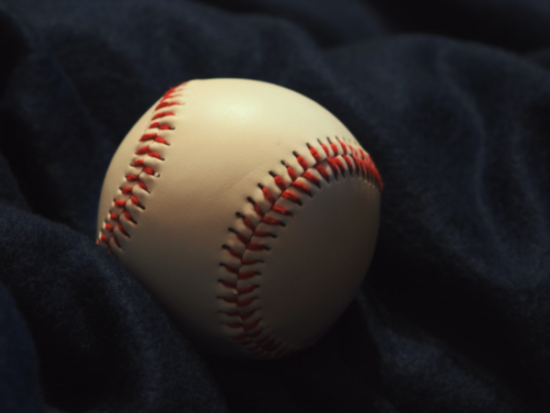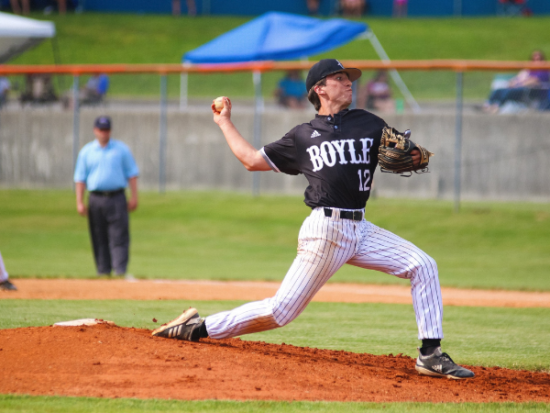Techniques on how to throw a curveball
Want to know how to throw a curveball? If you watch baseball, you probably know what a curveball is. A curveball is when a pitcher will cause the ball to deviate from the straight path in his delivery.
This strategy and pitching mechanics should be your go-to if you want to move the game to the next level. If thrown by the left hand, the ball should curve downward towards the right. This spin should most likely leave your batter confused, leading him to miss your delivery.
To learn how to throw a curveball, you must work on both your grip and throw. It is not easy and takes years of practice. Before investing time and energy, know that it is the right pitch for you.
How to Throw a Curveball? Learn Gripping

The pitcher should put the middle finger next to one of the long seams and the thumb just below the seam on the opposite side of the ball, forming a “C curve” with the horseshoe pointing in towards the palm.
Imagine holding a cup close to the rim with the middle finger instead of the index finger. The index finger is positioned beside the middle finger, and the other two fingers are bent inwards into the palm, with the ring finger’s knuckle brushing against the ball.
Related Articles
How to Put a Backspin on a Golfball
Softball vs. Baseball
How Many Innings are in Baseball?
What Are The Different Types Of Grips For A Curveball?
When you’re learning how to throw a curveball, you need to know that the finger placement is mostly the standard, with only slight differences in the index finger positioning. The names given to each type are mostly self-explanatory.
Finger on Top of the Ball
In this grip, the index finger lies gently on top of the ball without adding any pressure. In some situations, the pitcher even prefers to keep the index finger suspended.
Finger Crossed
Here the index and middle finger will be crossed on top of the ball. In simpler terms, the index finger will rest over the middle finger.
Finger Sticks Up (aka Adam Wainwright)
This curveball grip is practiced by the professional American ballplayer Adam Wainright. The index finger will still be beside the middle finger. It will just be suspended in the air rather than resting beside the ball. This technique is often criticized because the hitter will spot the index finger ending the entire purpose of deception.
Related Article: When Will Tom Brady Retire?
Fingernail Digs In
In this grip, the index finger still placed beside the middle finger will fold. The fingernail is dug in the ball to act as a place holder but does not apply any force.
Knuckle-Curve
It is similar to that of the fingernail digs in grip. However, except for the fingernail touching the ball, the first knuckle rests on it. Some people claim that it’s a different pitch when the only difference is the index finger placement.
How to Throw a Curveball?
It is necessary to understand that it’s not the grip that makes the pitch. A twelve-year-old will grip tight while holding the ball almost the same as a professional player.
The grip chosen is on your preference. Focus on the spin once you are comfortable with your grip. We don’t want the pressure to go through the center of the ball. We want the pressure to be at the edge to produce topspin.
It is so that the ball spins in the direction that it is traveling. It can either be a 12-6 clock direction or a 1-7 clock direction. If you manage to throw it to have a reasonable spin rate, it will create an increased high-pressure zone on the top and a low-pressure area at the bottom. It is known as the Magnus effect. The high-pressure air will push the curveball down.
So, what you need to focus on is a fast and clean spin to break it downward. A neat spin refers to how the ball is rotating around its axis. We have to try to get to the front of the ball to spin it the best. Getting to the front of the ball means that your fingernails should be in front of the target.
How Hard Should You Throw A Curveball?
Throw the curveball as hard as you possibly can. There are several reasons for this. The primary reason to throw a curveball is to deceive the hitter. When you release the ball, it has a lower trajectory confusing it with a fastball. Also harder you throw more, the Magnus effect will take effect.
Related Article: 8 Best Techniques of Writing Press Releases
Conclusion
It is not something that takes days. It is a lengthy process that requires patience, determination, and passion. First, obtain the knowledge needed to learn how to throw a curveball. Next, understand the steps to execute it correctly.
Remember to never get overconfident with your pitch and never go out of practice for as long as you intend to play ball. You can also sharpen your skills with the help of a trusted partner and implement that feedback for improved delivery.
Frequently Asked Questions
Which curveball grip is the best?
You can only decide which grip makes you comfortable and suits you best. The type of grip will make barely any difference. What matters is how you throw and how you execute your throw.
Is a curveball or slider better?
The difference between the two has to do with speed and break. A curveball is pitched slower than a slider and has a more consistent curve on its path. A slider, on the other hand, is tossed just as hard as a fastball. Its direction is much sharper than that of a curveball.
You can decide what’s better in general because it’s different for everybody. What’s recommended is, however, that you stick to what makes you most comfortable and master that only.
Is curveball dangerous?
Since it causes the pitcher’s forearm to turn just before throwing the pitch, the curveball has often been criticized for arm injuries.
When should a pitcher ideally start practicing curveballs?
While it is recommended that the child learns the pitch as early as age 14, he should not practice it all the time. As the angle improves, you can increase the frequency of delivering it.
What is a common mistake when you start throwing a curveball?
Many beginner pitchers make the mistake of turning their wrists sideways. It causes the pressure to be built on the sides that will not cause your ball to break downwards.




